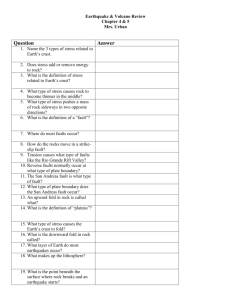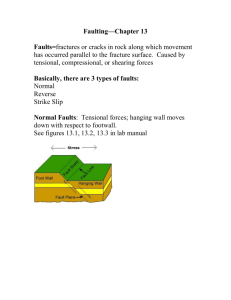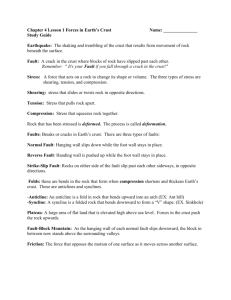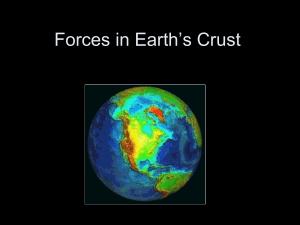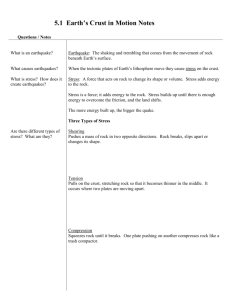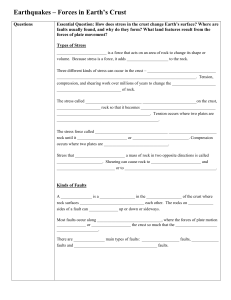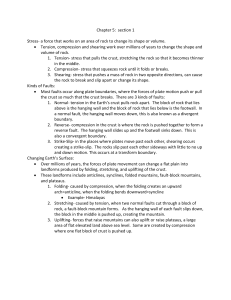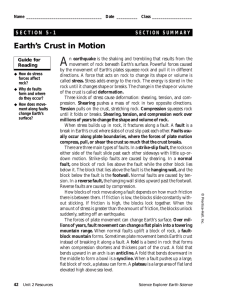Ch6 Sec1 - Stephanie Dietterle Webpage
advertisement
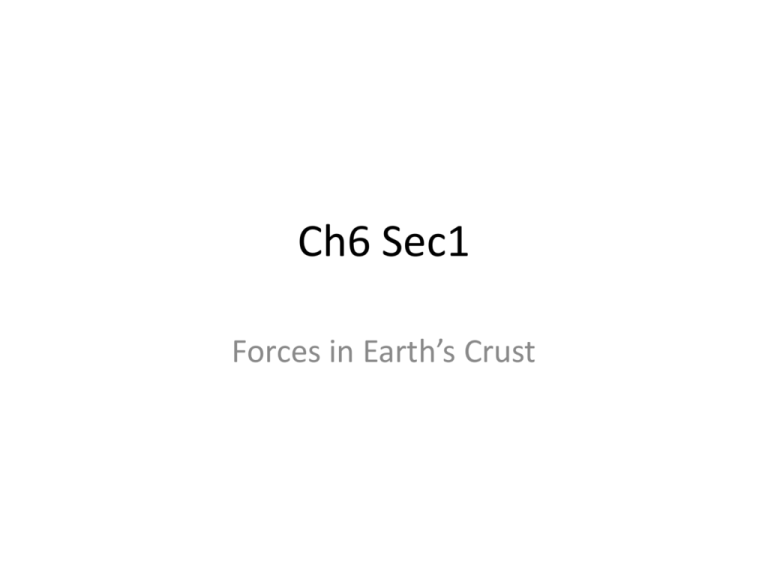
Ch6 Sec1 Forces in Earth’s Crust Key Concepts • How does stress in the crust change Earth’s surface? • Where are faults usually found, and why do they form? • What land features result from the forces of plate movment? Key Terms • • • • • • • • • • • • Stress Tension Compression Shearing Normal fault Hanging wall Footwall Reverse fault Strike-slip fault Anticline Syncline Plateau Ch6 Sec1 • Types of Stress – Stress: a force that acts on rock to change its shape or volume – Tension: pulls on the crust, stretching rock so that it becomes thinner in the middle – Compression: squeezes rock until it folds or breaks – Shearing: stress that pushes a mass of rock in two opposite directions Ch6 Sec1 • Kinds of Faults – Most faults occur along plate boundaries, where the forces of plate motion push or pull the crust so much that the crust breaks. There are three main types of faults. • Normal faults: tension in the Earth’ crust pulls rock apart – Hanging wall: the block of rock that lies above – Footwall: the block of rock that lies below • Reverse faults: same structure as a normal fault but the blocks move in the opposite direction • Strike-slip fault: the rocks on either side of the fault slip past each other sideways Ch6 Sec1 • Changing Earth’s Surface – Over millions of years, the forces of plate movement can change a flat plain into landforms such as anticlines and synclines, folded mountains, fault-block mountains, and plateaus – Anticlines: a fold in rock that bends upward into an arch – Syncline: a fold in rock that bends downward to form a valley – Plateaus: is a large area of flat land elevated high above sea level
